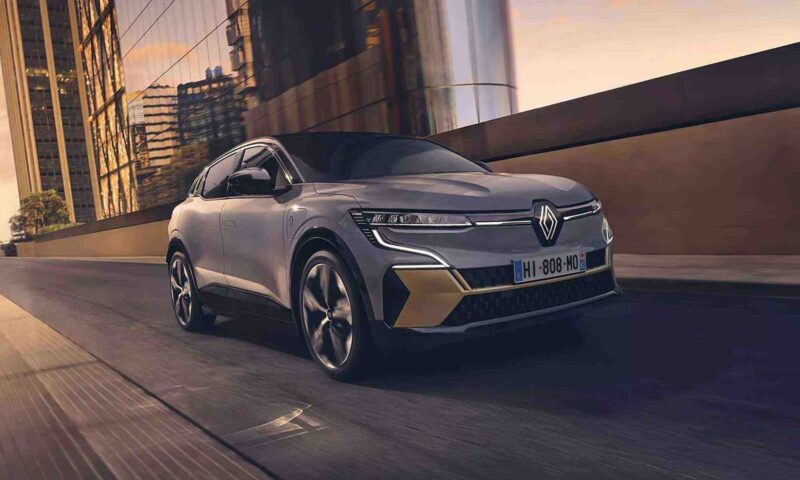What is a Self-Charging Hybrid Car?
A guide explaining the concept of self-charging cars and how they differ from other vehicles.
Last updated: Dec 06, 2024 • 4 min read

Summary
A self-charging hybrid is a car that uses a combustion engine and battery-powered electric motor to improve fuel consumption and reduce CO2 emissions. This doesn’t require charging through an external source. Instead, it repurposes energy from braking to charge up the battery.
What is a self-charging hybrid?
A self-charging hybrid, often referred to as a full hybrid or simply a hybrid, combines a traditional internal combustion engine (ICE) with a battery-powered electric motor to improve fuel efficiency. The battery is small and can only cover one to two miles in fully electric mode at a relatively low speed. Hybrids charge their batteries without the need to plug into an external power source like an electric vehicle charger, meaning drivers don’t have to change their driving habits.
Although the first self-charging car battery technology was explored in 1959 by the American Motors Corporation, this innovative concept first became available to the mass market with the release of the Toyota Prius in 2001. It marked a significant milestone in battery-powered driving and opened the door to a more sustainable driving option previously unavailable.
How does a self-charging hybrid work?
The key to the workings of a self-charging hybrid lies in regenerative braking and the conversion of movement into energy. When a hybrid slows down or descends a slope, the regenerative braking system captures the energy generated from motion that would otherwise be lost and converts it into electrical energy, storing it in the battery. This process allows a hybrid to recharge its battery during everyday driving activities, without the need for EV charging.
How is this different from a plug-in-hybrid, EVs or ICE cars?
Plug-in hybrid vs self-charging hybrid
Although described as hybrids, plug-in hybrid vehicles or PHEVs are distinctively different to self-charging (full) hybrids. A PHEV has an internal combustion engine and electric motor with a battery, just like a hybrid. However, the battery has a range of up to around 50 miles. This makes plug-in hybrids ideal for people who frequently drive shorter distances with occasional longer trips. Self-charging hybrids aren’t able to cover any meaningful distance on battery power only.
A plug-in hybrid has to be refuelled with petrol or diesel and recharged using a standard plug socket or chargepoint. The battery of a PHEV isn’t able to replenish itself using regenerative braking only, as it is in a self-charging hybrid. While this comes at the cost of convenience, it offers you a greater electric-only range than any full hybrid.
BEV vs self-charging hybrid
A battery electric vehicle or BEV is fully powered by an electric motor and large battery pack. A BEV battery is exclusively charged using an external power source such as an EV charger or standard plug socket. BEVs offer the best environmental credentials as they use no fossil fuels and produce zero tailpipe emissions.
While self-charging hybrids offer improved fuel consumption and reduced emissions without the range limitations, they still rely on petrol or diesel and emit CO2 emissions into the atmosphere.
ICE vs self-charging hybrid
Internal combustion engine (ICE) cars run solely on fossil fuels like petrol or diesel. They typically have a similar range to self-charging hybrids but emit more harmful CO2 emissions.
Self-charging hybrids reduce the reliance on petrol or diesel thanks to regenerative braking, lowering emissions and fuel costs without having to change the way you refuel your car.
Choosing between self-charging hybrids and other vehicle types
Self-charging hybrids occupy a niche and are merely a bridge technology for drivers moving away from fully fuel-dependent ICE cars. If you’re looking for electric-only driving on short distances, a self-charging hybrid is not suitable. While you can cover one to two miles, once the battery is empty, you’re driving on fuel only and carrying the extra weight of the dead battery. Plug-in hybrids are better suited to those nervous to go fully electric but looking for battery-powered driving on regular short trips.
However, BEVs are still more efficient and environmentally friendly than self-charging or plug-in hybrids. With public EV charging infrastructure expanding year-on-year across the UK and battery technology advancing at a steady pace, driving a battery electric vehicle has never been easier for drivers. With the upcoming ban on new hybrid and ICE car sales in 2035, investing in a battery electric vehicle is future-proof, cheaper in the long run and the only zero-emissions way of driving.

